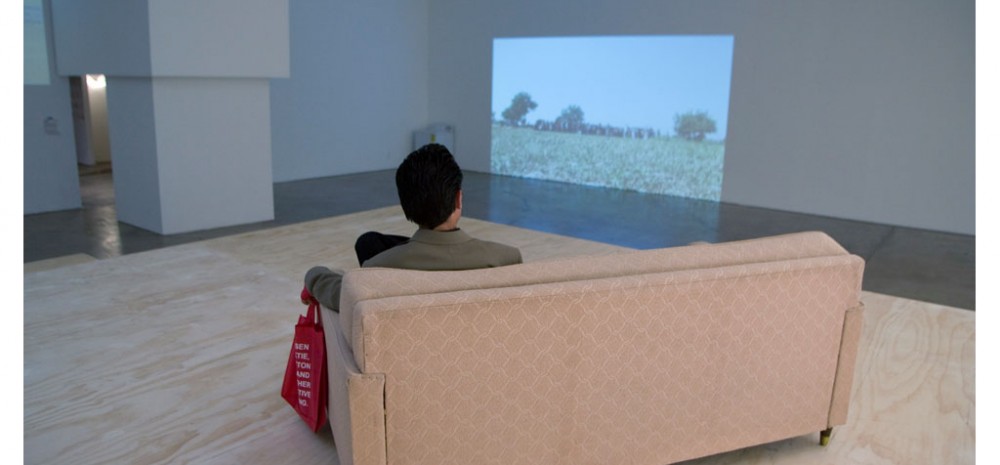Born in 1971 in Alexandria, Egypt
Lives and works in Alexandria
Wael Shawky
Telematch Suburb, 2008
I explore issues of cultural isolation and social modernization in this video installation. I invited people to a music concert in a rural village in Egypt’s Western Desert, where I built a stage on which a heavy metal band played. The audience, which numbered around 400 adults and children, was instructed to gaze passively at the performance. For the finished work, I edited out the actual music, and replaced it with a constant low frequency noise.
This video plays against the backdrop of several wooden stages constructed in the space at SITE. Lack of communication is key to this piece. As in previous works, I represent the dialogue, present or absent, between unrelated cultural and social systems.
Wael Shawky’s project is housed in Gallery 2.
In his installations, videos, photographs, and performances, Wael Shawky tackles uncomfortable issues. His most recent work deals with the dichotomies and contradictions of social norms, primarily relating to culture and religion. Possessing an acute sense of the absurd, he raises questions about what is generally perceived as “normal†and “acceptable.†Within this context, Shawky has explored a variety of specific themes that are often rooted in regional issues yet have profound international relevance – themes such as modernization, cultural hybridization, and marginalization.
“In most of my work I have been aiming to construct a hybridized society. A system of a society in transition, a condition that is not clear, a translation. I see my role as that of the translators- this translation is heightened the closer I come to a system of an actually existing society.â€
Shawky’s videos such as The Forty Days Road (2007), Digital Church (2007), and The Cave (2004) bring to the fore contemporary clashes of civilization. The latter two present the artist reciting the Koran within incongruous circumstances  namely a European supermarket and a Catholic church. These films contain penetrating insights into history whilst being deliberately provocative. The resulting hybrid puts into sharp focus current global trends: attempts by the West to dominate desert cultures; commercialization and shifting economics; enforced development; and religious tensions in the modern world.
In his work The Greenland Circus (2005), Shawky uses the context of the circus, in particular its role as a container of “abnormal activity†and exhibitor of physical irregularities, to animate the symbolic role of freak-show entertainment used to attract and repel spectators’ appetites while also compelling their voyeurism. The video becomes an examination of what is and is not acceptable and how these lines and rules are ever-changing according to seemingly random and unregulated shifts in space and time.
William Wells
